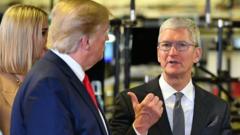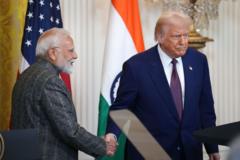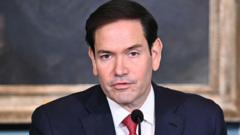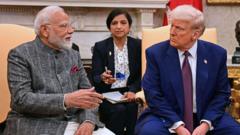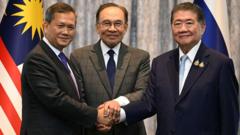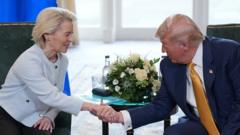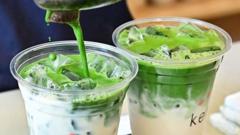South Korea's K-beauty industry, which saw a 50% increase in sales in the U.S. last year, faces challenges ahead due to a 15% tariff imposed by the Trump administration. While larger brands may absorb costs better, anecdotal evidence suggests that consumers are still willing to purchase K-beauty products despite potential price increases, although smaller retailers may find it harder to compete.
Impact of Trump's Tariffs on South Korea's K-Beauty Industry

Impact of Trump's Tariffs on South Korea's K-Beauty Industry
The 15% import tax imposed by the Trump administration threatens to reshape the booming K-beauty sector in the United States, prompting price hikes and altering purchasing behaviors among consumers.
The Korean beauty (K-beauty) industry has become a significant player in the global cosmetics market, particularly in the United States, where demand has skyrocketed. Inspired by a mix of South Korean culture's global appeal and the quality of products—including innovative ingredients like snail mucin—American consumers are turning to K-beauty, with an estimated $1.7 billion spent on such goods in 2024 alone.
However, a potential turning point in this flourishing sector has arrived with President Trump’s announcement of a 15% import tax on South Korean goods. Although the levy is less than the anticipated 25%, it has already caused a ripple through the K-beauty retail market, with businesses seeing an influx of orders as consumers utilize a "strategic" approach to anticipate future price increases.
Retailers like Santé Brand and Senti Senti have reported heightened ordering activity, with managers expressing concerns about maintaining lower prices amid changing tariffs. Despite projections of rising costs, which could strike hard at smaller retailers with narrow profit margins, many consumers, like 27-year-old Pearl Mak, remain loyal to their K-beauty products and indicate a willingness to pay higher prices if necessary.
Economist Munseob Lee suggests that while casual consumers may hesitate at steeper prices, dedicated fans of K-beauty are unlikely to shift to alternative brands. Larger K-beauty manufacturers might weather the storm better due to higher profit margins, leaving smaller businesses struggling to remain competitive.
Moreover, Trump's broader trade strategy may alter the landscape, as new tariffs affect not only South Korea but also Japan and the European Union—the latter home to major beauty brands. The potential for U.S. consumers to pivot toward domestic brands remains uncertain, with many admitting to difficulties in finding effective homegrown alternatives.
The K-beauty industry, buoyed by cultural trends and product loyalty, faces a unique challenge with these tariffs, but its enduring popularity seems to suggest resilience in the face of rising costs.

